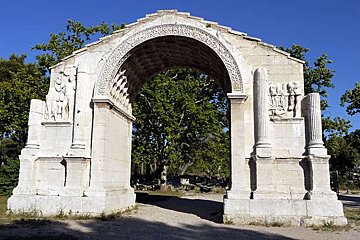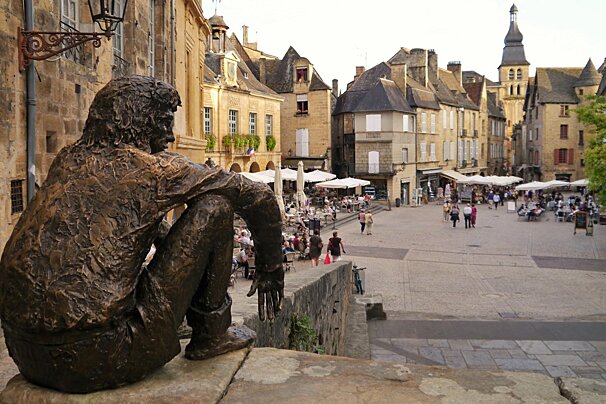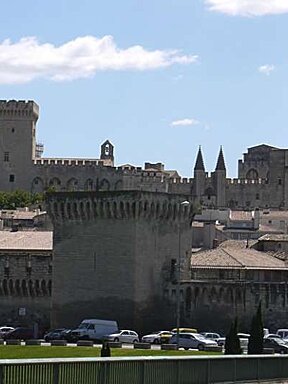
© SeeProvence.com

© SeeProvence.com

© SeeProvence.com

© SeeProvence.com
Glanum, near St Remy de Provence
Astounding Roman monuments and ancient settlement
Just 1km south of St. Rémy-de-Provence, you can enter a world more than 2,000 years old. Here the Celtic-Ligurians, Greeks and later, the Romans, settled down in a strategic valley and built and rebuilt a town that was known as Glanum.
Until 1921 the ancient settlement was lost, buried under earth and rocks. The major road in les Alpilles went right over it. Only the well-preserved Mausoleum of the Julii and the Triumphal Arch of Glanum were the reminders of this old settlement. These two impressive monuments (known as les Antiques) were an indication of the importance of Glanum.
The mausoleum (of c.30 BC) is believed to have been a memorial, not a tomb, to an important Roman family, once believed that of Caesar. Today, historians are not so certain. The arch was most likely constructed in the days of Emperor Augustus. It was and is the triumphal entrance to the old town of Glanum.
When you cross the street from the arch, you'll see a vast plain of ruins, walls, a lopped-off tower, the pillars of a temple, with the majestic mountains of les Alpilles in the background. This is Glanum, the town that was sacked by Germanic tribes in 270 and then abandoned by its people. Only in 1921 did the first excavations begin, and they continue to this day. The road to St. Rémy that covered the ruins had to be diverted.
Before you enter the ancient town, it's best to spend a little time at the small visitor centre, where you also buy your ticket. There, with the help of models, you can get a sense of what the town must have looked like during its three phases of occupation. The museum also offers insightful guides and displays a number of objects, or casts of them, that have been found on the site. The majority of the precious ones can be seen in the museum Hotel de Sade in Saint-Rémy-de-Provence.
With plan in hand, you then wander over the vast site of old Glanum. For the most part, you're free to wander about, enter what's left of the temple of Valetudo, goddess of health, discover the bath in a citizen's home, hunt for treasures, such as the inscription on this base.
The site of Glanum is open throughout the year except for public holidays.

























